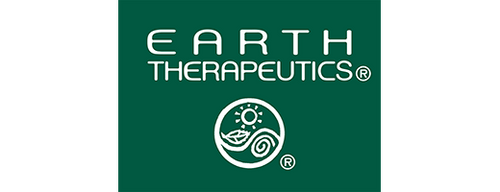We know the stat well: we spend around a third of our lives asleep. But are you aware that we also spend one-third of our lives obsessing about how to get a good night’s sleep?
That second stat is definitely not true, but it feels like it could be true.
We spend a lot of time, energy, and money seeking out the latest holy grail of a great night’s sleep, but which advice is gold, and which trends runneth dry? In our previous greetings, earthling post, we shared our favorite sleep tips from the past year.
Sleeping hacks as simple as shutting off blue-light are obvious now because we understand the correlation between our new-ish addiction to phones and how they can mess with our circadian rhythms. For our great-grands and grandparents, a cup of warm milk was sufficient; today, our needs are decidedly more complex.
Now, we turn our attention to the near future and round up the top sleep trends for 2023 and beyond.
Sleep syncing

We all have an inner clock that tells us when to wake up, when to eat, when to go to sleep. It’s called our circadian rhythm and in a world illuminated with artificial bright lights and addictive distractions, our rhythms can go a little haywire. The resulting wonky sleep schedules can impact our quality of life by bogging us down with fatigue and irritability, and make us more accident-prone.
Enter sleep syncing – a fancy tech-term to refer to resetting your internal clock. There are a few ways to do this, with apps and sunrise clocks, or by waking up with the sunrise and shutting down when the moon hits the horizon.
“Sleep syncing requires you to think about, and adapt, your daily routine to line-up with what your body naturally wants to do.”
Sleep syncing is credited with improving sleep quality, increasing energy levels, and promoting overall good health by ensuring a deep, restorative rest.
Sleep syncing: what is it, how does it benefit my sleep and how can I do it?
(Stylist)
Sleep Tourism

We wrote about the growing Sleep Tourism trend at the end of last year and it seems like it’s only continuing to gain momentum in 2023.
Hotels and resorts are expanding their superior slumber options to include super high-tech AI-equipped beds, dedicated sleep suites, and wellness programs centering around R.E.M. optimization through diet, meditation, and specialty spa treatments.
The offerings are meant to attract business travelers but also the sleep-deprived destination napper whose idea of a good time is time-off from schedules, expectations, and daily distractions.
“Wherever they are in the world, it's clear that sleep is a top priority for travelers and that the industry is taking note, bringing more attention and creativity to this quintessential hotel experience. Whether it's a snooze-inducing aromatherapy list, in-room melatonin, a nightly menu of teas, or a highly customizable bed, there are so many ways that sleep can be enhanced while traveling.”
Sleep Tourism Is Trending in 2023, With A.I.-Equipped Hotel Beds and Glamping Under Dark Skies
(Conde Nast Traveler)
Sleep Gadgets

Nobody loves a good life hack more than the tech world. New gadgets meant to make our lives better through engineering are constantly hitting the market:
-
The Oura ring is a simple wearable tech band that wraps around your finger and tracks all sorts of bio-data including your sleep-wake cycle. Through the app, the different body metrics are analyzed and rated. These scores can help the user optimize sleep patterns and energy levels, and even potentially warn when you might be getting sick.
-
Moonbird is the first handheld breathing tool that helps guide you through exercises to help alleviate stress, anxiety, and promote sleep. It claims to get users to sleep in 8 minutes on average and you can check in on your inner peace via their dedicated app.
-
Bryte Balance Smart Bed is an AI-enhanced mattress that constantly monitors your body metrics throughout the night and adjusts to create the optimal conditions for sleep.
Tech gadgets that will help improve your sleep
(USA Today)
Sober Curiosity

The ‘sober curious’ movement continues to grow as people start to reevaluate their relationship with alcohol and how it affects their mood and health. Even in moderation, consuming alcohol can mess with your biochemistry and circadian rhythm. I recently wrote about my 30-days without alcohol and, combined with a few other nighttime rituals, I’ve noticed a marked improvement in the quality of my sleep. I liked it so much, I kept going and haven’t had a drink (or a sleepless night) since.
“I initiated a Dry January bet…not only did I win a fantastic dinner at the end of my sober month but I also garnered incredible benefits along the way, like better sleep, clearer skin, and an elevated mood, among other perks,” says Hilary Sheinbaum, author of The Dry Challenge, a how-to guide on going sober for 30 days. (Forbes)
Whether you try a sober month or start swapping out the odd cocktail with a mocktail, cutting out alcohol has been proven to help with getting to sleep, and sleeping through the night.
Dry January is Becoming a Lifestyle Trend
(Forbes)
Scandi Inspired

When it comes to cornering the market on slow living trends, the Scandis always come out on top. During the long winter months, there’s not much to do at night but get hygge with a thousand tea light candles and a couple of mugs of hot glögg.
We shouldn’t be too shocked atthe photos of the dozens of strollers parked on breezy Nordic streets, stuffed full of swaddled babies happily snoozing away. Adults enjoy solar-powered winter naps as well. It’s part of their love of outdoor, or free-air living called friluftsliv (pronounced free-loofts-liv) and you’ll probably be hearing more about it as an overall wellness trend in 2023.
Another “trick” making the rounds is the Scandinavian trend of sleeping separately, together. Simply put, sharing one duvet is a recipe for disaster, especially when someone is a bed hog. This is one of those “of course” tips that feels a little like breaking an unwritten rule. However, using two twin duvets is all upside: hot sleeps can select a lightweight duvet while cuddlers can wrap themselves up in a cushy comforter. A win is a win.
This Simple Scandinavian Bed Hack Could Be The Key To Better Sleep
(Huffington Post)


